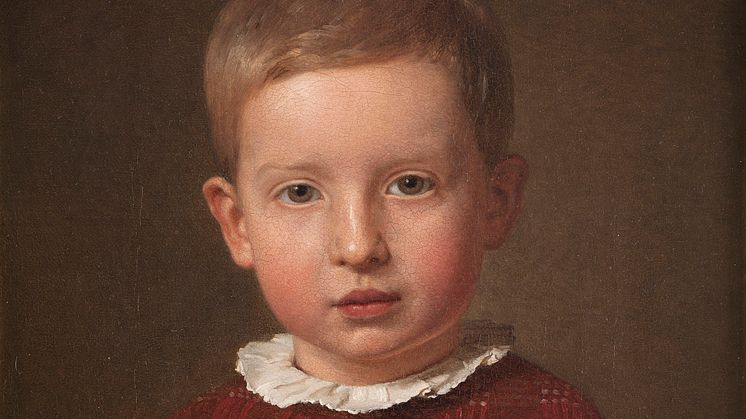
Press release -
New acquisition: Portrait by Christen Købke
To add to its collection of paintings from the Danish Golden Age, Nationalmuseum has acquired a portrait by Christen Købke of the artist’s nephew, Johan Jacob Krohn, at the age of five. Painted in 1846, the portrait is one of the artist’s most sensitive, successfully capturing the child’s personality. The Købke portrait complements other works in the museum’s collection, illustrating the versatility of one of Denmark’s most interesting artists.
The first half of the 19th century in Denmark saw a flourishing of everything from science and philosophy to literature, art and music. The period from 1810 to 1850 has become known as the Danish Golden Age. The art of the period is typified by an interest in everyday life and motifs that artists could find close at hand.
Christen Købke, one of the most prominent artists of the Danish Golden Age, was equally gifted as a portraitist and a landscape painter. Like most Golden Age artists, Købke drew a significant portion of his motifs from his immediate surroundings. His landscapes often depict scenes close to his home. The motifs are humble in nature, but the perspective captures something unexpected. The artist paints sharp images with great precision and uses his means of expression sparingly but effectively.
Intimacy is another quality found especially in Købke’s portraits, such as that of his nephew Johan Jacob Krohn (1841–1925), who went on to become a prominent author and scholar. The portrait of the five-year-old boy has a vivid immediacy. Købke’s painting is executed with exceptional skill, yet captures a true likeness of the individual. This combination of unpretentiousness and mastery is typical of the leading artists of the Danish Golden Age and is one of the reasons for their international renown.
Nationalmuseum’s purchase of this work has been made possible by a generous bequest from the Wiros Fund. Nationalmuseum has no budget of its own for new acquisitions, but relies on gifting and financial support from private funds and foundations to enhance its collections of fine art and craft.
Media contacts
Carl-Johan Olsson, curator: carl-johan.olsson@nationalmuseum.se, +46 8 5195 4324
Hanna Tottmar, press officer: hanna.tottmar@nationalmuseum.se, +46 767 234632
Caption
Christen Købke, The Artist’s Nephew. Johan Jacob Krohn, Author and Scholar, as a Child, 1846. Photo: Cecilia Heisser/Nationalmuseum
Categories
Nationalmuseum is Sweden’s premier museum of art and design. The collections comprise older paintings, sculpture, drawings and graphic art, and applied art and design up to the present day. The museum building is currently under renovation and scheduled to open again in 2017. In the meantime, the museum will continue its activities through collaborations both in Sweden and abroad as well as temporary exhibitions at the Royal Swedish Academy of Fine Arts, Fredsgatan 12 and Nationalmuseum Design at Kulturhuset Stadsteatern in Stockholm. Nationalmuseum collaborates with Svenska Dagbladet, FCB Fältman & Malmén and Grand Hôtel Stockholm. For more information visit www.nationalmuseum.se.

